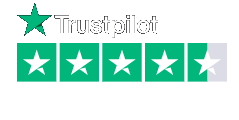How to identify high value customers and then find them!
If you want to improve the quality of your leads, attract the kind of customers and sales you want, you need to develop a customer persona.
If you try, as many do, to simply market to everyone, everywhere in a belief that its just a numbers game and if you sell and market to everyone someone is bound to buy from you.
Not true!
The reality is you simply attract no one because your sales and marketing is too generic so it doesn't appeal or resonate with anyone. What you need is a laser focus on your ideal customer that you then tailor your marketing and sales around.
Here are 4 easy steps to creating your buyer persona.
Firstly, what is a buyer persona?
A buyer persona is simply a detailed fictional character that you would develop to represent your company’s or business’s optimal customer.
You need to know who’s buying from you in order to sell effectively. Buyer personas work as a reference point so you can always make sure you’re marketing to the right people.
And we’re here to help you make one for yourself in just 4 easy stages.
1 - Research: Who is your target audience?
Research, as you can imagine, is critical when developing your persona. The easiest way to start this is by looking at your current and repeat customers and seeing if you can identify if they have anything in common. Whatever common denominators you can see can be added to your buyer persona as these are the kind of components in customers you want to keep attracting. This can also work backwards if you look at previous customers you’ve had bad experiences with.
Another great way to research your target audience is by openly asking them. You can do this in a number of ways: An email survey, an interview, or even a phone call. Prepare a series of questions focusing on what you’d like to know. for example, their goals, pain points, values and challenges. You could even ask them about their preferences towards content. Anything that you find out to create a bank of relevant information to use for your persona.
2 - Detail: Include as much as possible to add value.
The more relevant detail you have, the more value your buyer persona will have.
You’ll want to include all of your top level information first. Give your persona a name, age range, location, career, education level and yearly salary.
Then it’s time to think about your personas personal life. Your persona must act as a fully realised person so personal life is important to give a real insight. For example, are they married? Kids? Sociable?
From here you can look at your persona’s identifiers where you can cover things like their demeanor, communication preferences, and their choice of social network. Are they calm, prefer a phone call and big on Facebook? Or are they quite stressed, favour emailing and tending to focus more on LinkedIn?
Now, you’ll want to think very carefully about what your persona’s motivations and barriers are for buying. We’ll cover this in more detail next.
3 - Motivation & Barriers: Why or why wouldn’t they buy from you?
Motivation and barriers to buy are two of the most important parts of your buyer persona. You need to know why your persona is likely to buy from you or not. This is the stage where your previous research from talking to your past and return customers comes primarily into play.
Their goals and values are what motivates them to make changes and buy while their challenges and pain points are the barriers which may deter them from buying.
Example:
Motivation: Keep employees happy and staff turnover low.
Barrier: Getting everything done with a small team of staff.
While you’re going through your persona’s potential motivations and barriers (it’s always helpful to have a few of each), you can think about how you can service and support your persona.
4 - You: What can you do to help?
This part is straightforward. Finish off your buyer persona with what your business can do to help. Put everything together to work out what you can do to aid them in reaching their goals or overcoming their challenges.
This part is purely about what value you have to give in your buyer personas scenario so you’ll know how to pitch to this particular customer in future.
That’s it!
You should now be well on your way to developing your first buyer persona. You may not even want to stop there, many businesses will benefit from having multiple buyer personas so they can personalise different segments of their audience.










